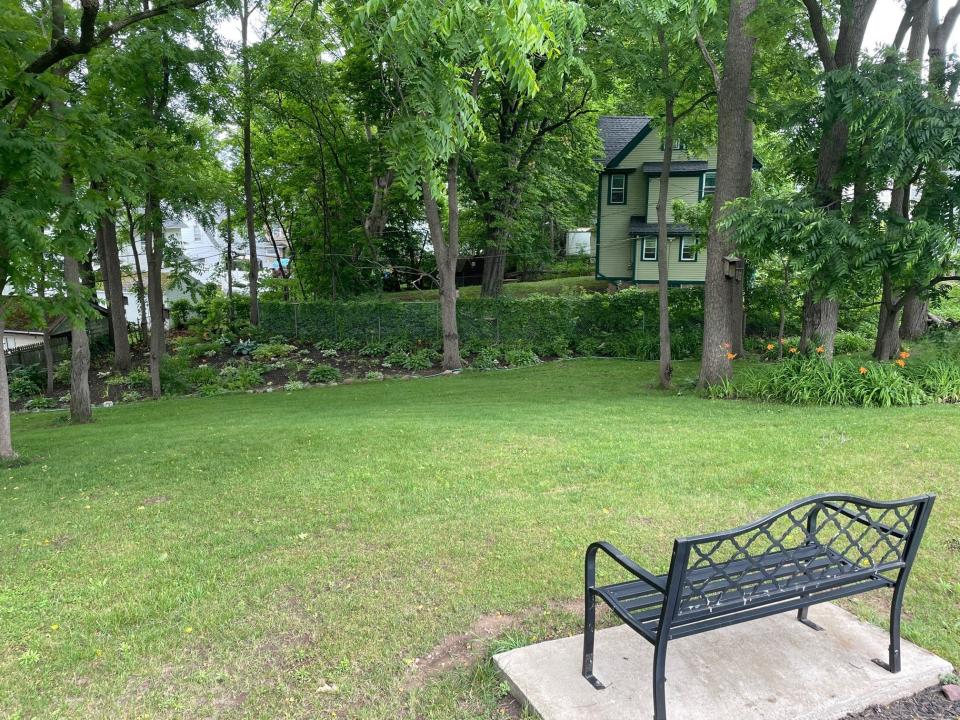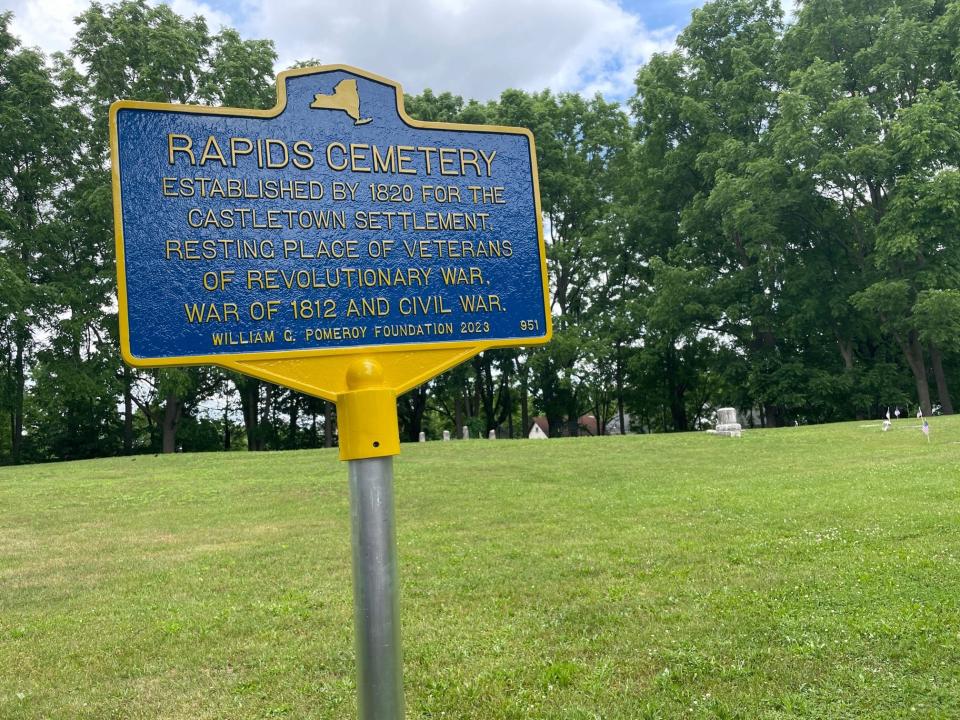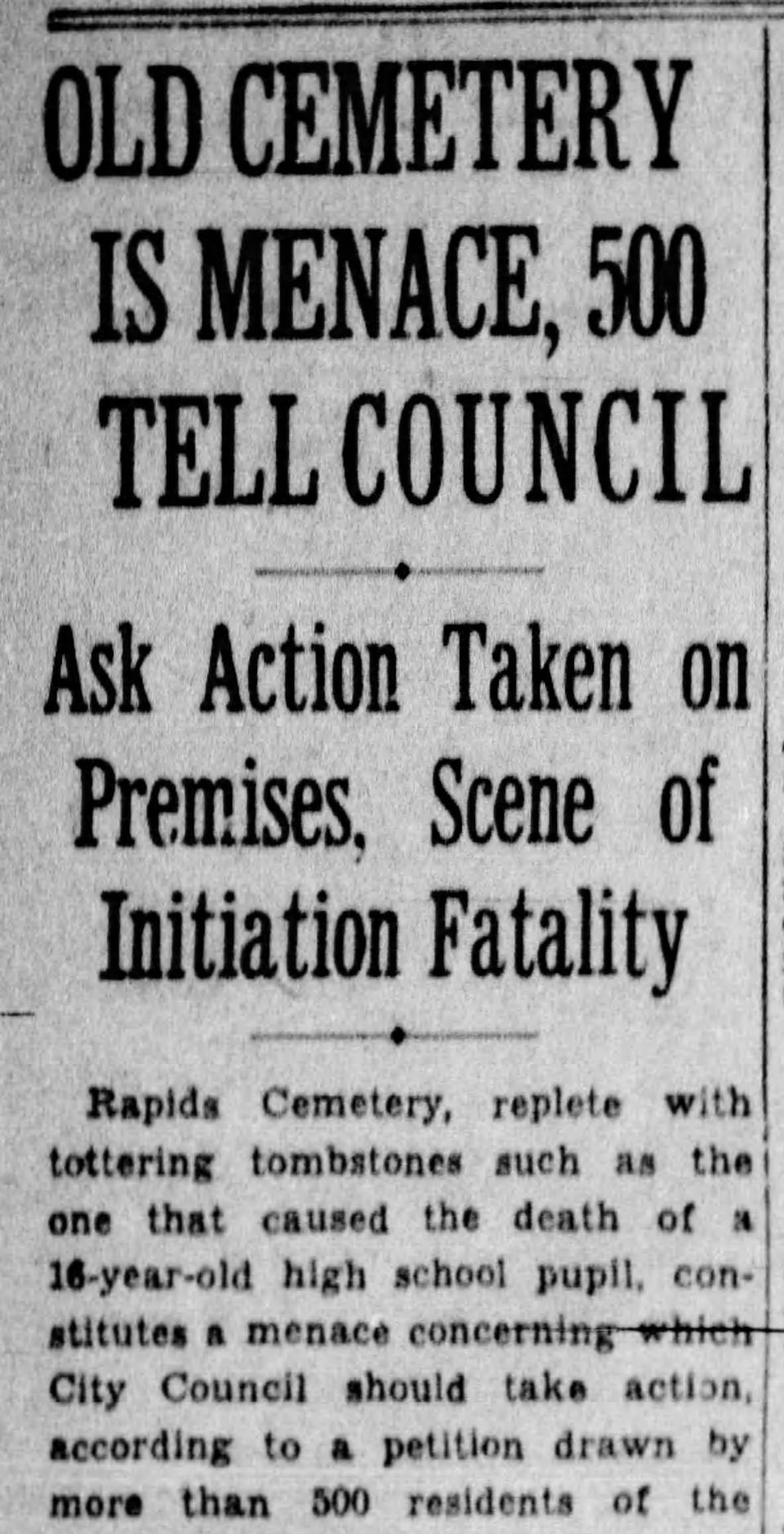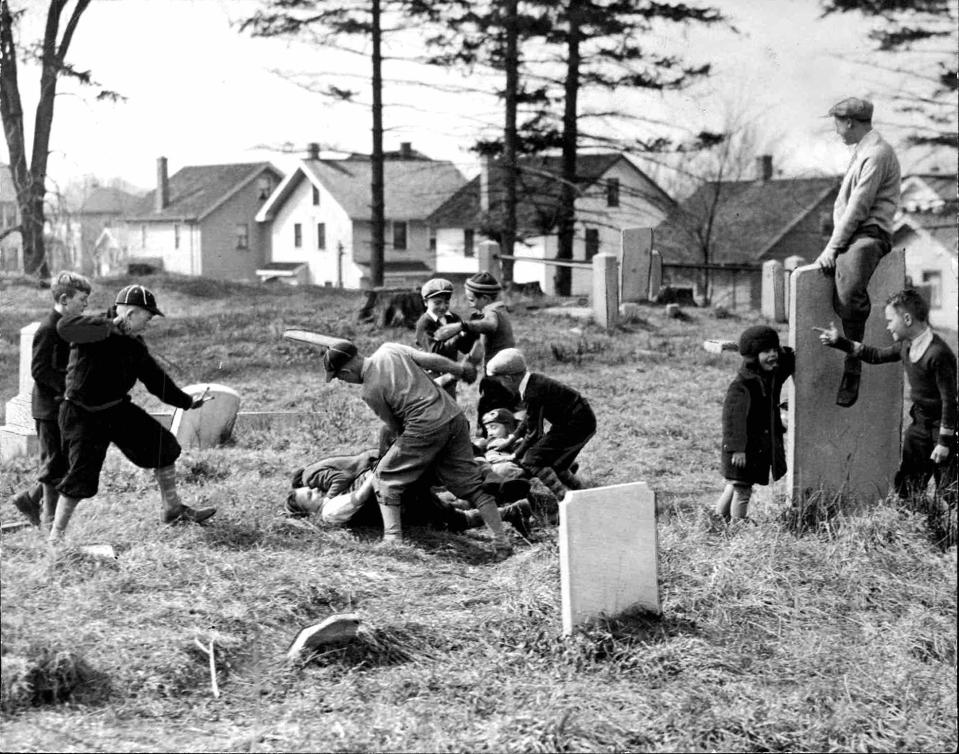A historic 19th Ward cemetery was forgotten. A decade of community effort brought it back
Just 10 years ago, Rapids Cemetery in southwest Rochester was only minimally maintained and the stones were cracked, partially buried or forgotten altogether. Only about a dozen were visible, though it's believed more than 100 people are buried there.
They include James Pamment, a 19-year-old killed in battle during the Siege of Suffolk, Virginia, in 1863, and Monroe Oakley, a Civil War veteran who operated the Rapids Hotel at Brooks Landing and headed the Rapids Cemetery Association before being buried in it in 1915.
The neglect of the historic cemetery began to change when the Veterans Memorial Council of Rochester and Monroe County drew attention to the poor shape of gravestones for soldiers from the Revolutionary War, War of 1812 and Civil War.
"Until the veterans came, we were as ignorant about it as anybody," said MaryDan Cooper, chair of the 19th Ward Community Association's history and archives committee. "They said, 'It's looking terrible, and there's a lot of veterans in there.'"
A decade of spade work, both literal and metaphoric, culminated this week with a newly unveiled historic marker for one of the region's oldest burial grounds, Rapids Cemetery in southwest Rochester. It is a testament to the historic nature of the small cemetery on Congress Avenue and also the efforts of the 19th Ward Community Association, city of Rochester and local veterans groups to bring it back to life.

Now, a bench overlooks a meditation garden in a corner where wild garlic and grapevines used to make a thicket. Black raspberries growing on trellised bushes on the north border go to St. Peter's Kitchen.
Preservationists used ground-penetrating radar as well as "manual probing" — digging — to look for other burials, then cleaned the stones when possible and conducted research on the people beneath them.
The new sign was provided by the William G. Pomeroy Foundation, a Syracuse nonprofit focusing on local history.
And there are heady ideas for the future about beekeeping, a connection to the nearby Erie Canal trail and even resumed burials.

Rapids Cemetery in Rochester: From active burial ground to 'menace'
The cemetery was laid out around 1810 for the settlement of Castletown, the location of a major disembarkation point on the Genesee River. Before the Main Street bridge in downtown Rochester was finished in 1812, most people traveling north on the river forded it at a rapids near the current Brooks Landing in the 19th Ward, according to research by former city historian Ruth Rosenberg-Naparsteck.
James and William Wadsworth bought land there and opened a tavern in 1800. The settlement was shortly outpaced by Rochester itself, particularly after the route of the Erie Canal was chosen in 1817, but the cemetery remained active as the city of Rochester grew.

By the 1880s lots started at 10 cents a square foot, with a potter's field set aside in the southwest corner who couldn't afford that much.
For about a century, Rapids Cemetery was alternately forgotten or bemoaned as a hazard. In 1933, a 16-year-old boy died there after a 700-pound monument fell on him, leading neighbors to ask that the cemetery be either repaired or cleared.
"The condition of said property is a menace," they wrote. "It is improper that a place of burial be used as a playground for our children (and) its condition is a reflection on the neighborhood and on the whole city."
Nothing came of the request, and it continued as a playground and ball field for several decades longer.
Neighbors and veterans groups pleaded over the years for some sort of resolution. A proposed housing development was shot down in the late 1960s.

Monroe County pays tribute to other pieces of local history
Two other historical markers were unveiled elsewhere in Monroe County this week. One, at 1233 E. Main St. in Rochester, commemorates the laboratory of Martha Mathilda Harper, a pioneer in retail franchising.
The second is in Durand Eastman Park and represents the "White Lady," who according to local legend roams the area looking for her lost daughter. The stone foundation of a demolished banquet hall stands nearby, adding to the mystique.
A soccer program, a step team and more: Take a peek inside Rochester's R-Centers
Business: Largest U.S. custom clothing maker to purchase former Hickey Freeman factory in Rochester
This article originally appeared on Rochester Democrat and Chronicle: Rapids Cemetery in Rochester, NY cleaned, historical marker unveiled

